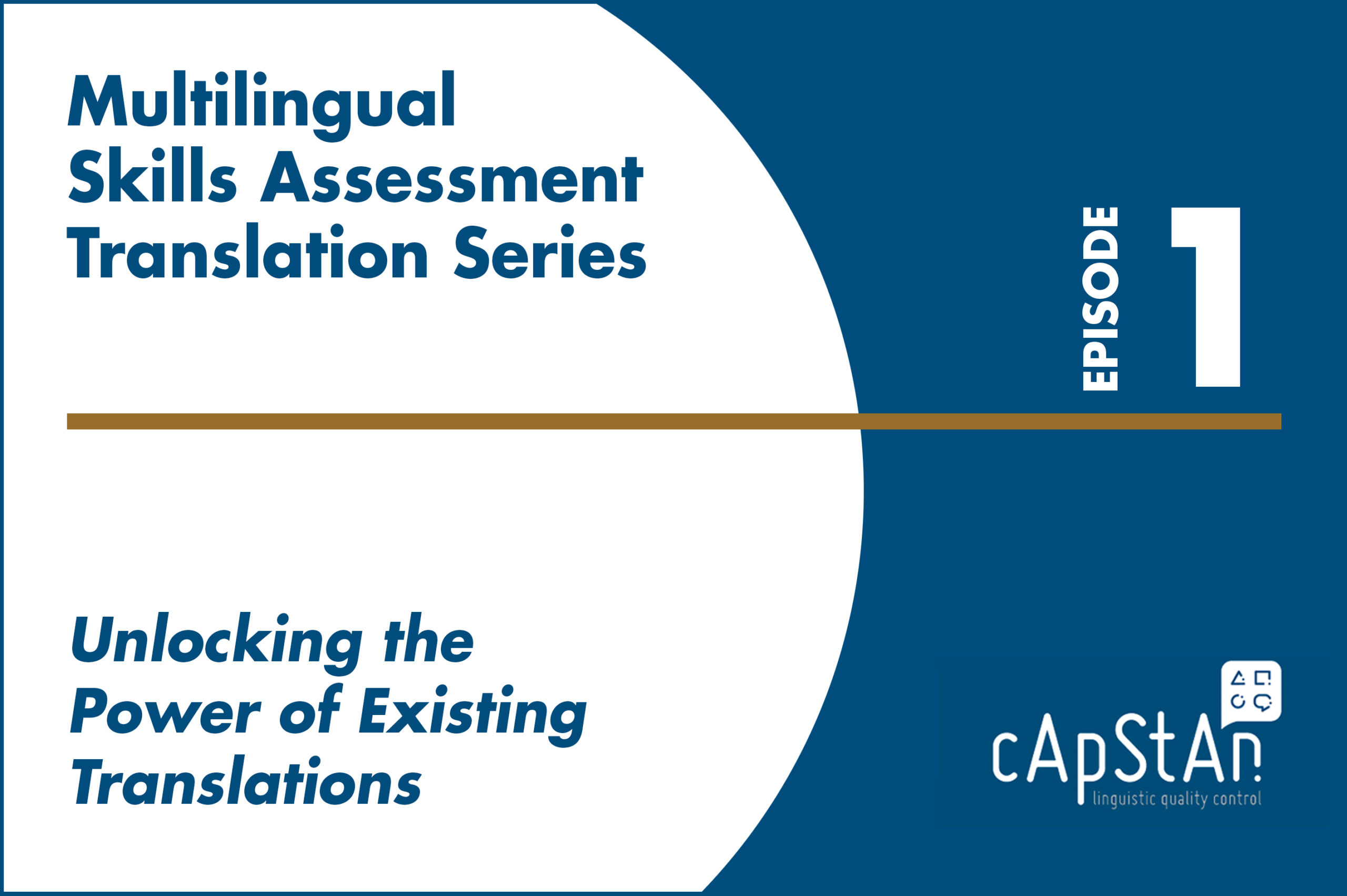
Multilingual skills assessment translation series, Episode 1: Unlocking the power of existing translations from a previous test cycle
This is the first episode of an informative series on good practice in skills assessments translation. It is based on cApStAn’s extensive experience in the multilingual assessments on which we have worked with reputable testing organisations. The purpose of the series is to illustrate the complexity of test translation and the added value of a robust linguistic quality assurance design. We plan to post five consecutive issues in this series, and this is the first one.
Let us take the example of a (fictional) test to measure consultants’ competencies in in helping companies in damage control situations (which we will call the “Chaos Management Skills Assessment”, CMSA). Imagine that this is the second assessment cycle, and that part of the items can be recycled from the previous cycle. The test is administered in 12 different languages. In the first cycle, the test was administered in 6 of those languages. It was agreed to have the new assessment items translated by professionals.
In this episode we will look at how translated items from the previous test cycle can be leveraged for the new items. These are the first three steps:
- Analysis of the existing source
- Retrieval of items from the previous cycle
- Translation of new items, with the aid of translation memories
Content that remains the same across the two CMSA assessment cycles is referred to as trend content.
The rule we applied was that, since existing translations had been used to measure skills, the translations of new items should – as far as possible – use the same wording for prompts, the same form of address, the same recurring expressions as the trend items, as long as they were not outdated or blatantly incorrect. In multilingual assessments systematic editing of trend items should be avoided as this can elicit different cognitive skills to answer the question and can potentially affect the level of difficulty of the item.
- “Translation memories”, databases that store previously translated segments or phrases along with their corresponding source texts, were used to leverage previous translations.
- When a similar or identical segment appeared in a subsequent assessment or test, the translation memory was referenced to retrieve the previously translated equivalent.
- Translation memories help streamline the translation process, ensure consistency, save time and resources, and contribute to overall quality control.
Once the test developers have translated the new items, the pre-final draft was submitted to a panel of experienced linguists from different target language groups.
In the next episode, n° 2, we shall describe how translatability assessment works and the process of drawing up item-by-item translation and adaptation notes in test translation.
…………………………………………………………………………………………………………………………
Meanwhile, if you’d like to learn about how we can help you with your test localization projects, do fill our Contact form, and we’ll get back to you as soon as we can.